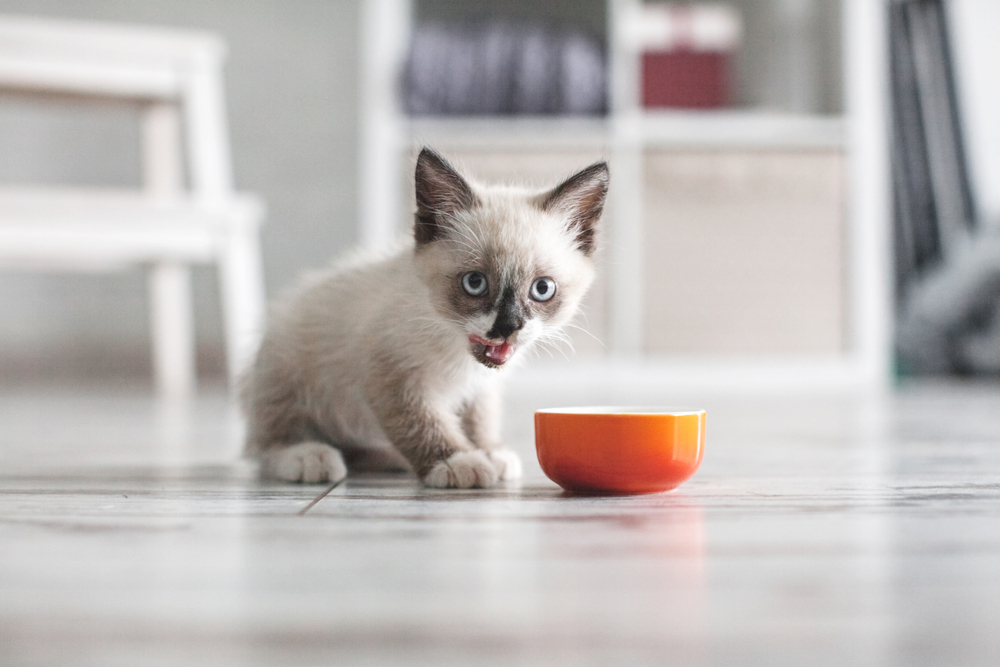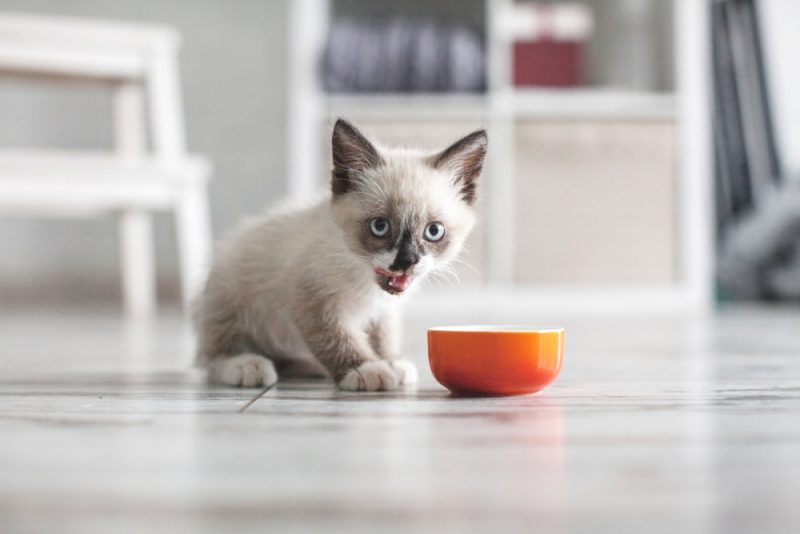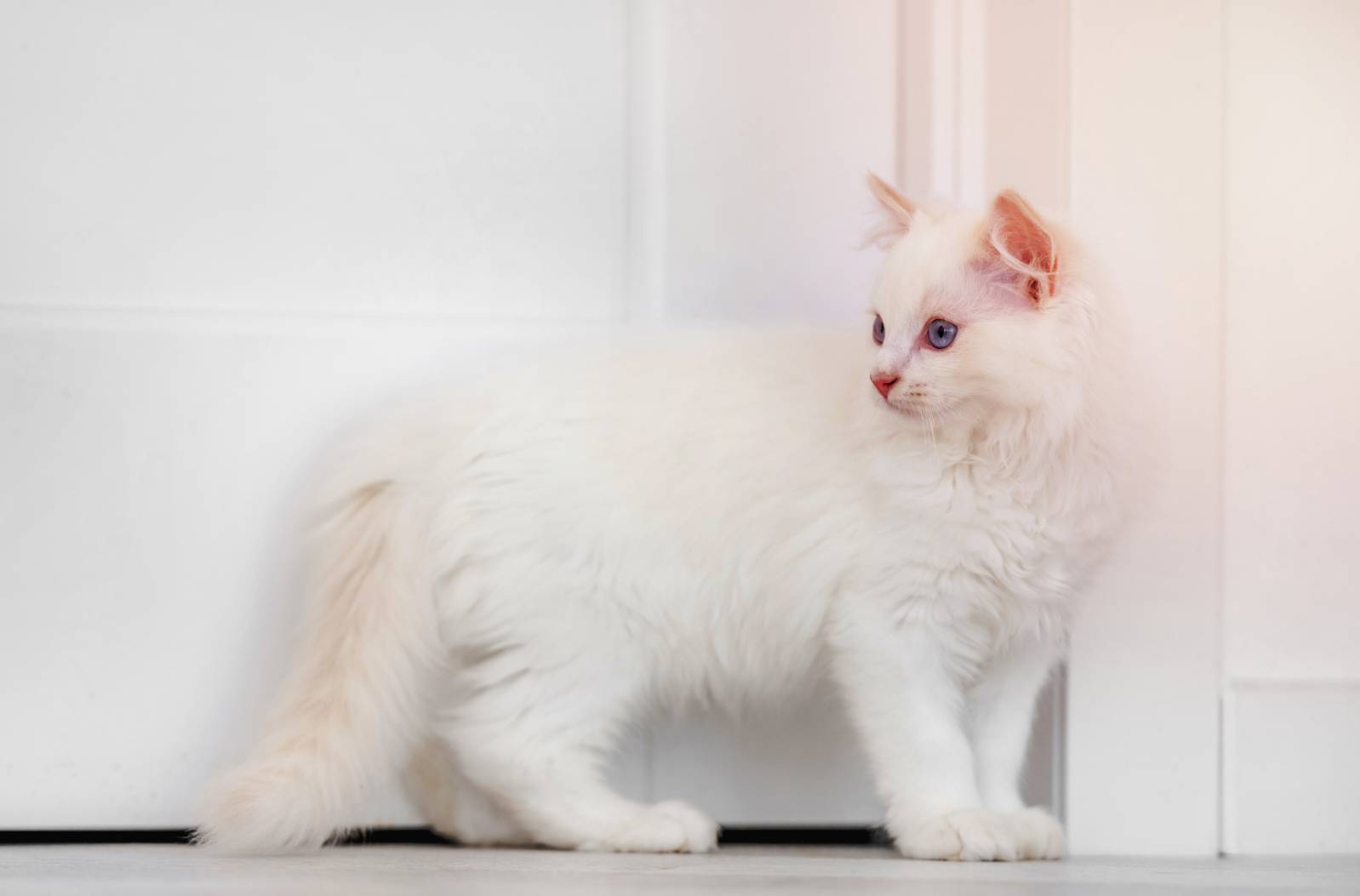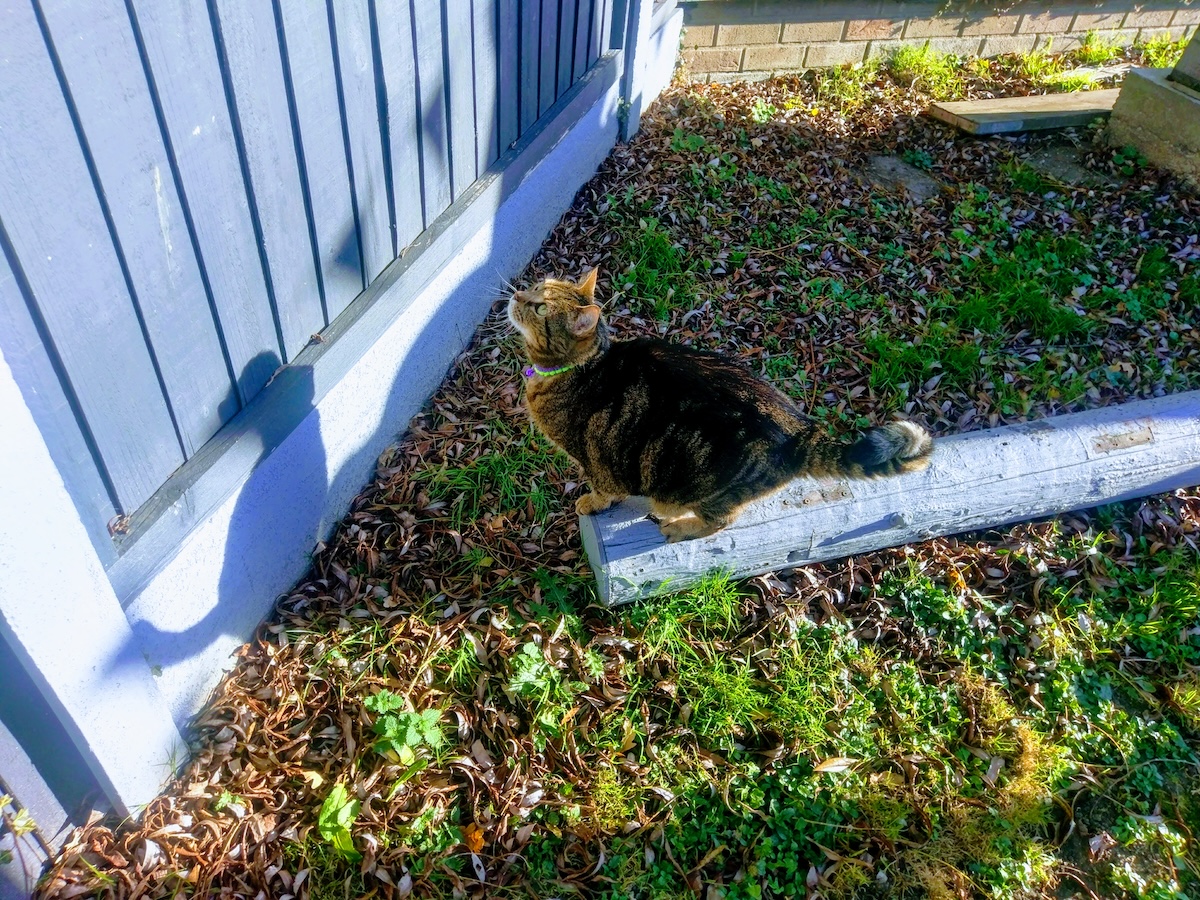Bringing home a new kitten is exciting but can also be overwhelming, especially for first-time cat owners. It’s very important to nail your kitten’s nutrition to ensure they grow up to be strong and healthy. If you’re not sure what or how often you should be feeding your new baby, you’ve come to the right place. Read on to learn everything you’ve ever wanted to know about feeding a newborn kitten to ensure optimal growth and wellness.
Guideline Kitten Feeding Chart
| Age of Kitten | Approximate Weight | What to Feed | How Much to Feed | Feeding Frequency |
| Newborn to 3 weeks | 3 ounces to 1 pound | Mother’s milk or kitten formula | 2 to 15 ml formula | Every 2 to 4 hours |
| 4 to 5 weeks | 1 to 1.8 pounds | Mix of mother’s milk or formula, and wet food | 18 to 22 ml formula | Every 6 to 8 hours |
| 6 to 8 weeks | 1.8 to 2.6 pounds | Weaning period; offer lots of wet food, can offer dry | 1/4 to 1/3 cup dry, offer gruel at every feeding | Every 6 hours |
| 8 weeks to 5 months | 1.5 to 5.75 pounds | Wet, dry, or combination* | 1/3 to 1 cup dry; 3 to 5 servings of wet food | Every 6 to 8 hours |
| 6 months to 1 year | 5.75 to 12 pounds | Wet, dry, or combination* | 2/3 to 1¼ cups dry; 1/4 can to 1/2 can per pound of bodyweight | Two meals daily ( at least) |
* Reduce recommended portion sizes if you’re feeding a combination of both wet and dry food.
Note: Different foods will have different amounts of calories per cup and so these are only very rough guidelines. Calculate how much to feed your kitten by checking the food packaging for specific information and consulting with your veterinarian.
Feeding Requirements by Age
0–4 Weeks Old
Newborn kittens will nurse from their mothers frequently, as often as every two hours during their first seven days of life. After that first week, they’ll gradually decrease these feeds to around four to six times daily. Kittens in this age range should gain about 15 to 20 grams of weight every day. If you notice a kitten lagging, you may need to supplement them with a high-quality cat milk replacement fed as per the instructions on the label.
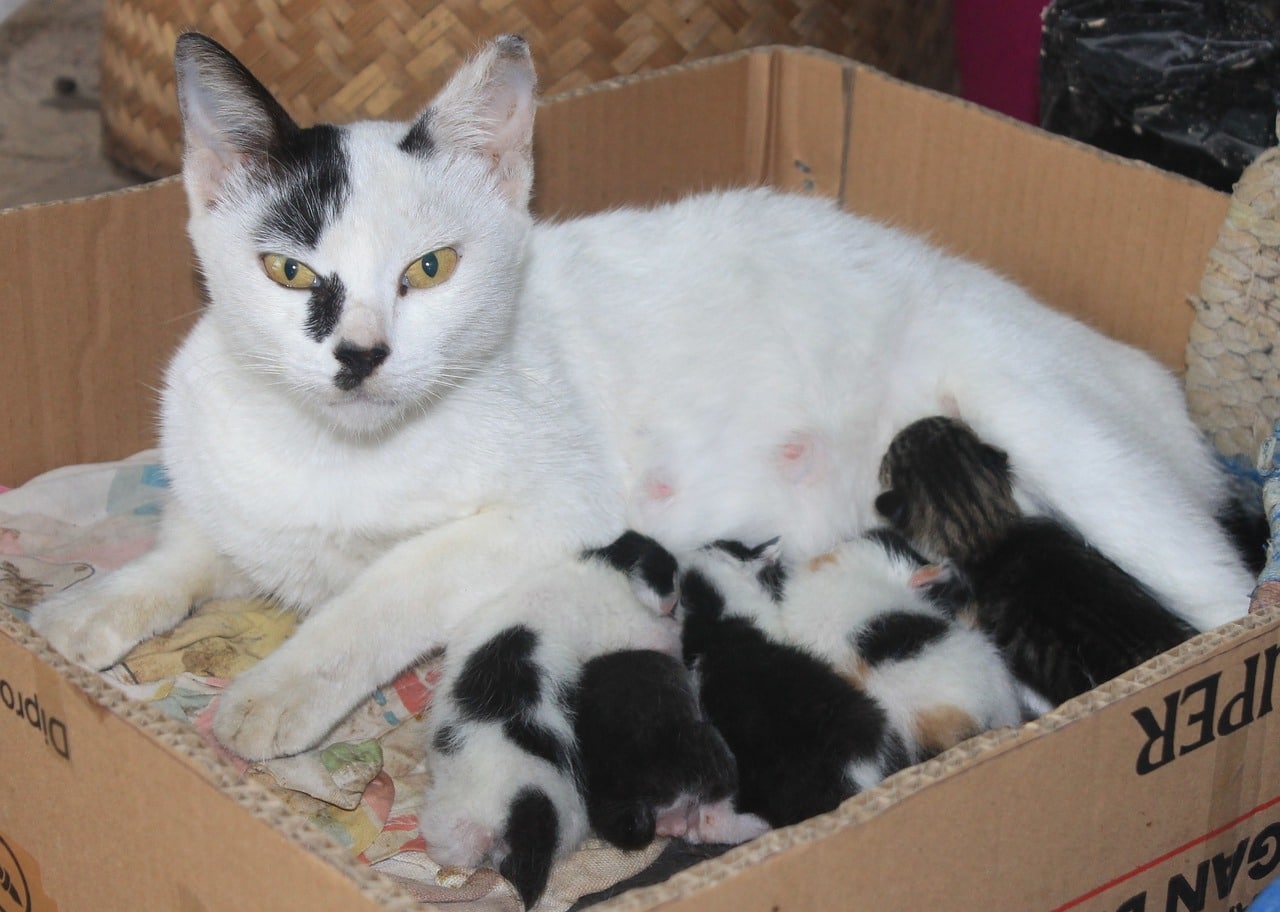
4 Weeks–6 Weeks Old
At around three or four weeks, kittens can begin weaning off their mothers’ milk and transitioning to solid food. Most kittens aren’t completely weaned until around eight weeks, so this process should be slow and gradual.
Allow them access to a kitten-specific wet food formula. The food should be soft and warm to encourage them to eat it. You may need to begin the weaning process by allowing the kitten to lick the wet kitten food mixed with warm water from your finger. Create a “gruel” by mixing wet kitten food with water. You can blend it or use a fork to mix it. We recommend warming the gruel in your microwave in 5-second increments, or adding warm water, and stirring it to make it more appetizing. Be careful to ensure it is not too hot.
Once they get the hang of that, food can be served in a bowl or plate. Repeat the process several times daily.
6 Weeks–8 Weeks Old
By the time your kittens reach the two-month mark, they should be drinking water and eating independently. You can offer dry food at this point if you wish, though we recommend soaking it in a few tablespoons of warm water at first to help make the transition easier.
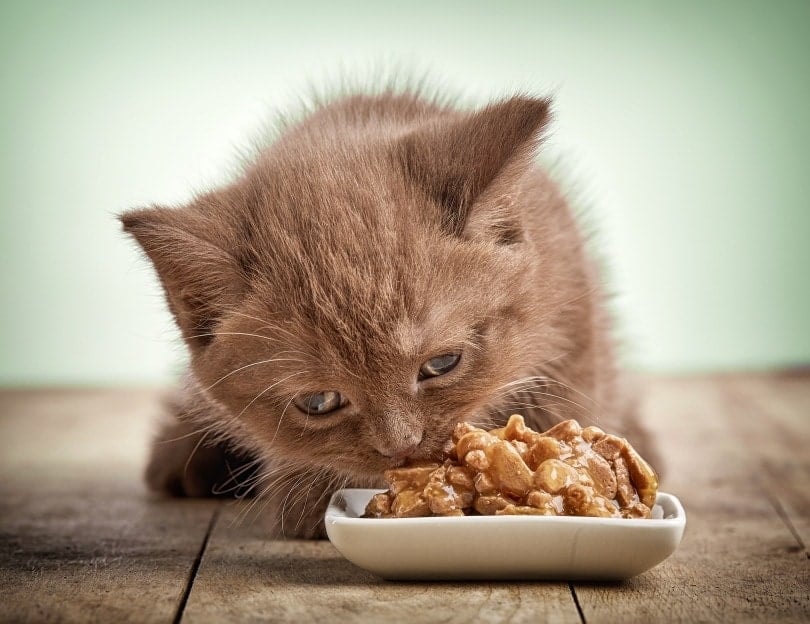
8 Weeks–6 Months Old
Kittens grow the fastest during the first six months of their lives, after which their need for increased caloric intake and nutrients begins to wane. The feeding chart we’ll share below will give you a good jumping-off point for deciding how much to feed, but most experts recommend using the kitten’s body condition to make adjustments as necessary. For example, if your kitten’s spine,ribs and hips are easily visible, you may need to feed them more than what is suggested.
6–12 Months Old
A kitten’s body is still growing between six and 12 months of age, though at a much slower rate. They won’t burn as many calories as they were in previous weeks, so you must transition them to adult food between 10 and 12 months to avoid unhealthy weight gain.
Knowing when to transition to adult food can depend on your kitten’s breed, size, and activity levels. Some cat breeds, such as Maine Coons, don’t reach full maturity until they’re 18 to 24 months old so that they can stay on kitten food longer than other breeds.
We always recommend referring to the food manufacturer’s guidelines and speaking with your veterinarian if you’re unsure how much your kitty should be eating, as they can consider their size and breed when making recommendations.
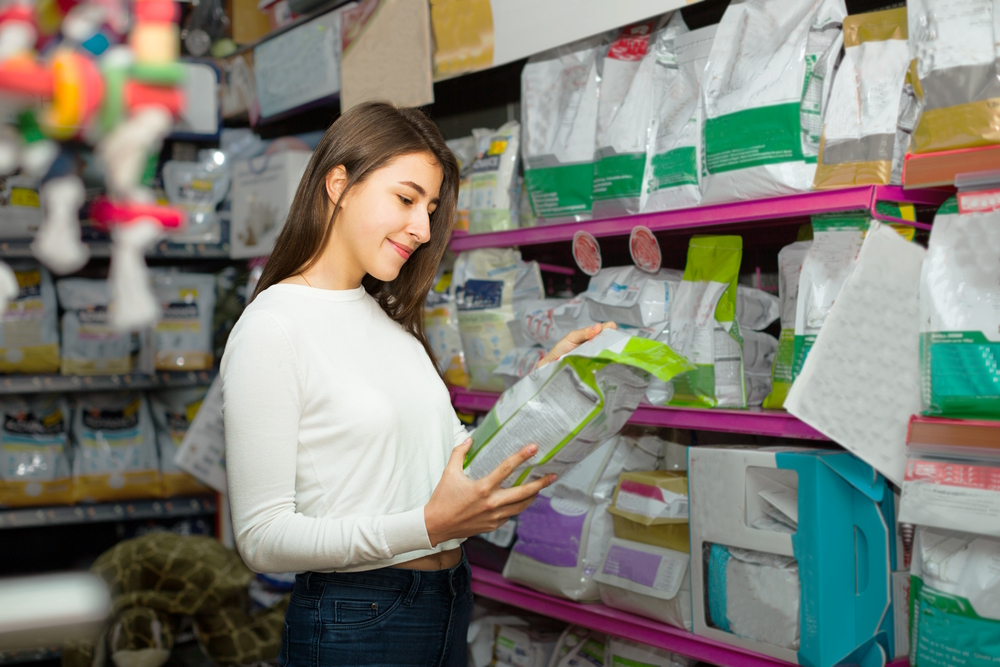
What Is the Optimal Kitten Growth Rate?
A good rule of thumb for kittens is to gain around one pound per month. A kitten often weighs around one pound at one mouth, two at two months, and so on until they reach the four- or five-month mark.
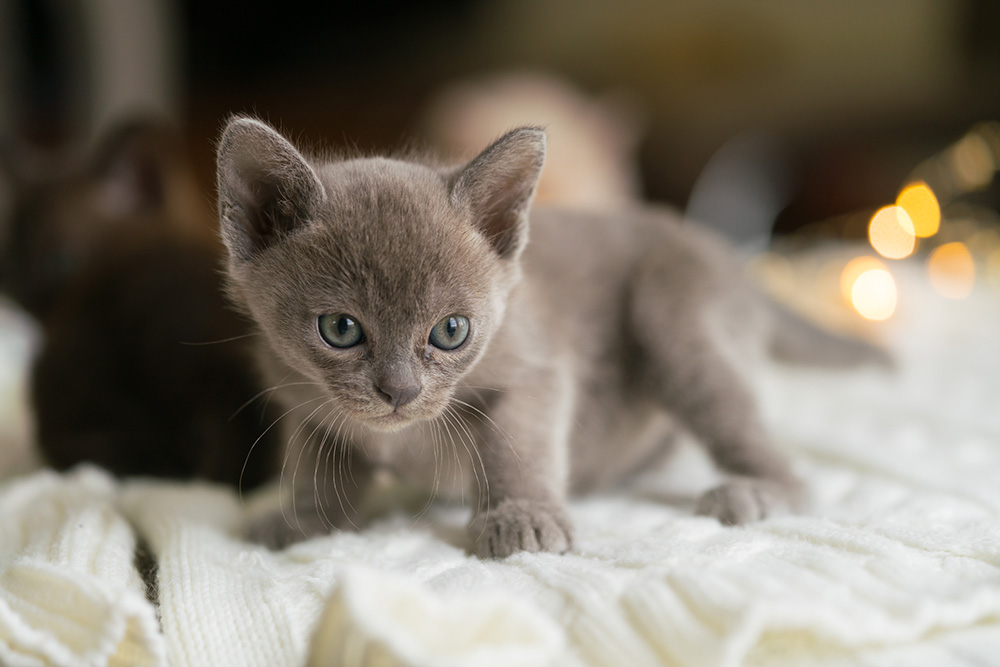
Wet or Dry Food for Kittens?
Wet and dry food can be very healthy for kittens, provided they’re good quality and nutritionally complete and balanced for this life stage.
Wet food is higher in moisture and can ensure your busy little kittens are hydrated adequately. This extra hydration can also help keep the urinary tract healthy.
Dry food is typically easier to feed, especially if you’re dealing with multiple kittens at a time. Dental plaque and calculus are less frequent in cats fed dry rather than wet food, promoting better oral health.
The biggest difference between the two food types is their moisture content. Dry food contains just 6 to 10% water, while canned food can contain up to 85% water. Typically, wet food also has a higher percentage of protein and fewer carbohydrates, making it closer to the ideal diet for your feline family members. However, this isn’t always true, as it depends greatly on the brand and formula.
Most vets would agree that very young kittens should be offered at least some wet food in their diet as their teeth are very small and, therefore, cannot chew dry food as well as they should.
Feeding a diet that contains both wet and dry food is an option. Doing so provides the growing kittens with the benefits associated with both types of food.
At Catster, we’ve admired Hepper for many years and decided to take a controlling ownership interest so that we could benefit from the outstanding designs of this cool cat company!
Feeding Methods for Kittens
Free-Feeding
The free-feeding method allows kittens access to their food at all times. Only dry foods can be fed in this way, as canned foods should not be left out at room temperature for long periods; otherwise, it may begin growing bacteria and attracting insects.
The biggest advantage of free-feeding is that your kitten can eat several smaller meals throughout the day on their own schedule. The key to doing this successfully is ensuring you’re placing the right amount of dry food your kitten requires for the day in the bowl.
The downfall of free-feeding is that it can lead to overeating and weight gain, especially if you’re too generous with your portions. Additionally, it can be hard to determine if your kitten’s appetite has changed, and it may be challenging to use this method if you have multiple cats.
Meal Feeding
Meal feedings for kittens are much like how we eat as humans. This method requires you to provide food for your kitten at specific meal times throughout the day. Both wet and dry foods can be fed in this manner.
The biggest advantage of meal feeding is that it allows you to monitor your kitten’s intake closely. This is especially important when you need to keep a close eye on your pet’s appetite to see if it has changed.
A disadvantage of this method is that you may need to get used to your kitten begging for food between meals. However, if you’re following your vet’s (and our) feeding advice, your kittens should be receiving proper portions that allow them to stay satiated between meals. Naturally cats prefer to eat several small meals a day.
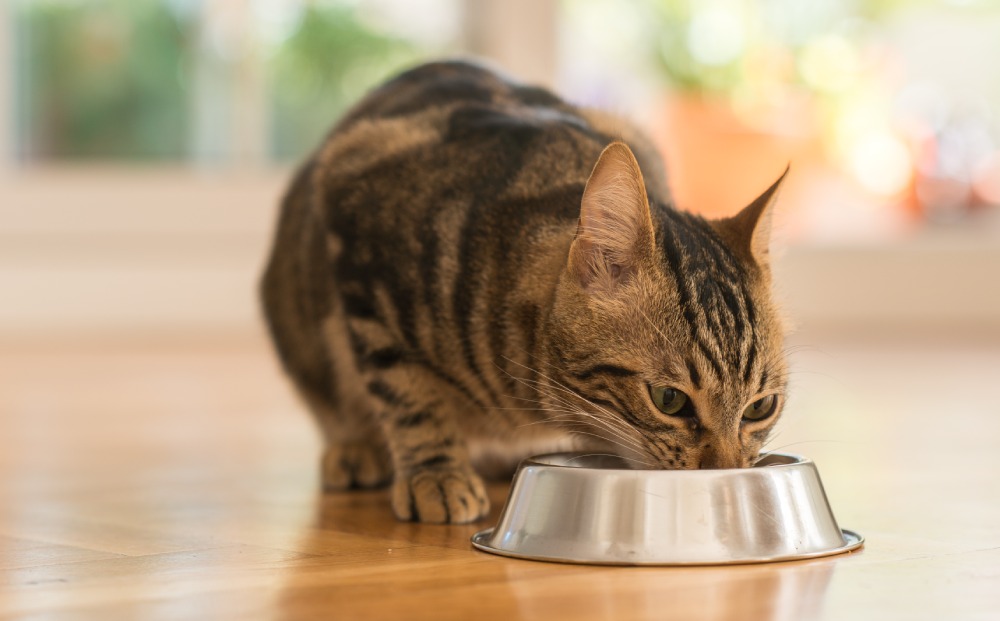
Combination Feeding
Combination feeding is just what it sounds like—a combination of the previous two methods. You can serve your kitten canned food as their meal twice daily and allow them free reign to their properly portioned dry food throughout the day.
The advantages of combination feeding are that it lets your cat eat as many small meals of dry food as they want on their own schedule while still allowing you to monitor their appetite through how much canned food they’re eating. This method also provides the kittens with the benefits of both canned and dry food.
As with free feeding, this combination method may lead to overeating and weight gain if done incorrectly. You must measure the dry food portion out exactly and not refill the bowl until the next day. Again, it can be challenging to monitor appetite and food intake, especially if you are feeding multiple kittens.
Final Thoughts
How much your kitten needs to eat depends on their age, breed, size, and health. Kittens should be allowed to nurse from their mothers exclusively for the first two weeks of life before they naturally start reducing their nursing frequency. At around five weeks, they can start to be weaned off their mother’s milk and slowly transition to solids.
Featured Image Credit: Gladskikh Tatiana, Shutterstock

